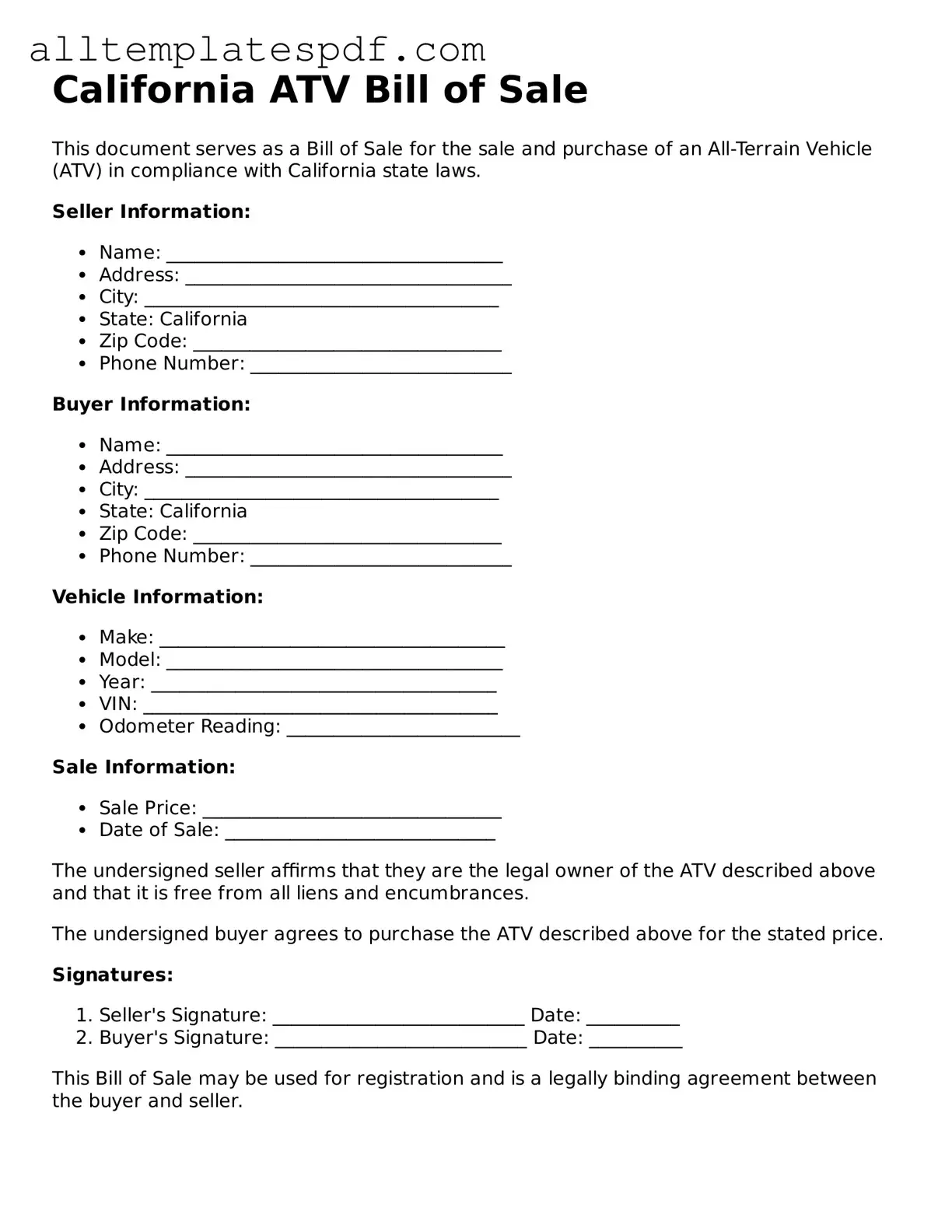Filling out the California ATV Bill of Sale form can be straightforward, but many people make common mistakes that can lead to complications later. One frequent error is not providing complete information about the ATV. It’s essential to include the Vehicle Identification Number (VIN), make, model, and year. Missing any of these details can create confusion and complicate the transfer of ownership.
Another mistake is failing to include the seller's and buyer's full names and addresses. This information is crucial for legal documentation. Omitting it can result in difficulties if there are disputes or if the new owner needs to register the ATV.
People often overlook the importance of signing the form. Both the seller and the buyer must sign the Bill of Sale for it to be valid. A signature serves as proof of the transaction, and without it, the document may not hold up in legal situations.
Inaccurate date entries can also pose a problem. It’s important to fill in the correct date of the sale. This date helps establish the timeline of ownership and can affect registration and taxes.
Another common error is neglecting to indicate the sale price. The form should clearly state the amount the buyer is paying for the ATV. This information is not only important for the buyer and seller but may also be needed for tax purposes.
Some individuals forget to check local regulations regarding the sale of ATVs. California has specific requirements that may vary by county. Not adhering to these regulations can lead to fines or other legal issues.
People sometimes use outdated forms. It’s crucial to ensure that you are using the most current version of the California ATV Bill of Sale form. Using an outdated form may lead to incorrect information or missing sections.
Another mistake is not keeping a copy of the completed Bill of Sale. Both the buyer and seller should retain a copy for their records. This document serves as proof of the transaction and can be important for future reference.
Additionally, some individuals fail to disclose any liens or loans on the ATV. If there is a lien, it must be cleared before the sale can be completed. Not doing so can lead to legal complications for the buyer.
Lastly, people sometimes rush through the process without reviewing the completed form. Taking the time to double-check all entries can prevent mistakes that could complicate the sale. A thorough review ensures that all information is accurate and complete.
